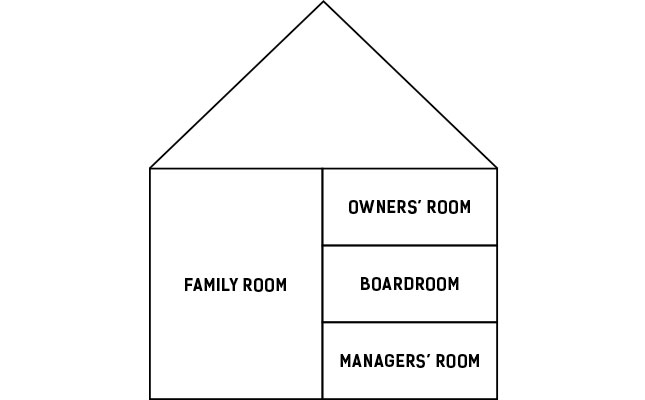
It has happened again. A well-known family in our district has lost control of its business, and the children of the two owners – cousins – refuse to be in the same room together.
It’s an all-too-familiar scenario. Few family businesses remain under family control past the second generation.
In a recent Harvard Business Review article, ‘Making better decisions in your family business’, authors Josh Baron, Rob Lachenauer and Sebastian Ehrensberger use the ‘home’ model as a guide to making sound decisions in a family business.
READ Should you nominate a beneficiary on a retirement annuity?
Separate decision-making
Four ‘rooms’ [departments] are required, each with a clear purpose: the owners’ room, the boardroom, the managers’ room and the family room.
To begin with, the owners set high-level goals for the business and appoint the board. The board then monitors the performance of the business and the CEO. The management directs the day-to-day operations of the business. And the family builds unity and develops ‘family talent’.

Business decisions are taken in the appropriate room, and family members and others involved behave differently in each room. For example, a non-family CEO might occupy the management room, but cannot tell the family heir what to study at university.
Neither can the non-family CEO handle dividend payments; this is the job of the directors.
On the other hand, the directors cannot tell the CEO whom to hire and fire; that decision is made in the management room.
READ Family farming: fostering a good working relationship
Family members cannot simply walk into any room and interfere. There is a clear hierarchy of rooms, and the family room is not at the top. The owners sit in the top room, the board answers to them, and management answers to the board.
Note that the family room is adjacent to all the other rooms. It deals with family conflicts that spill over into other rooms and helps family members develop the skills they need to enter one of the other rooms.
In my own experience, too many family businesses comprise a ‘one-room house’. The distinctions between family, ownership, directorship and management are not understood.
Roles and functions are confused and the seeds of discord are sown.
In the ideal ‘four-room business house’, each room is occupied by carefully selected people, with clear agendas and decision-making boundaries. Any conflict arising from random overlapping is avoided or at least limited.
Baron et al point to two further problems that afflict failing family businesses: the missing room and the messy room. The former is where an entire group does not have a room to itself.
READ Business and legal implications of an agritourism venture
Most commonly, the authors found that there was no owners’ room; the owners had in effect handed their proxy to the board.
This might not matter greatly where owners and board members are the same people, but it’s always best to have both rooms and deal with issues in the appropriate forum.
Personally, I have found that the family room is often missing. In other words, the family has never set up a forum for briefing its members properly on the business.
The family room is also where members’ needs are discussed, and rules laid down. The latter could include, for example, the qualifications required for family members to enter the business.
In the ‘messy room’ scenario, people are allowed into rooms where they do not belong, and the discussions are not relevant to the functions of the people in the room.
Agendas for discussion in each room should be carefully defined, set and maintained.
Follow this model, and your family business has a fighting chance of lasting beyond the third generation.
Peter Hughes is a business and management consultant with 30 years’ farming experience.
Was this article helpful? Leave your comments below.






